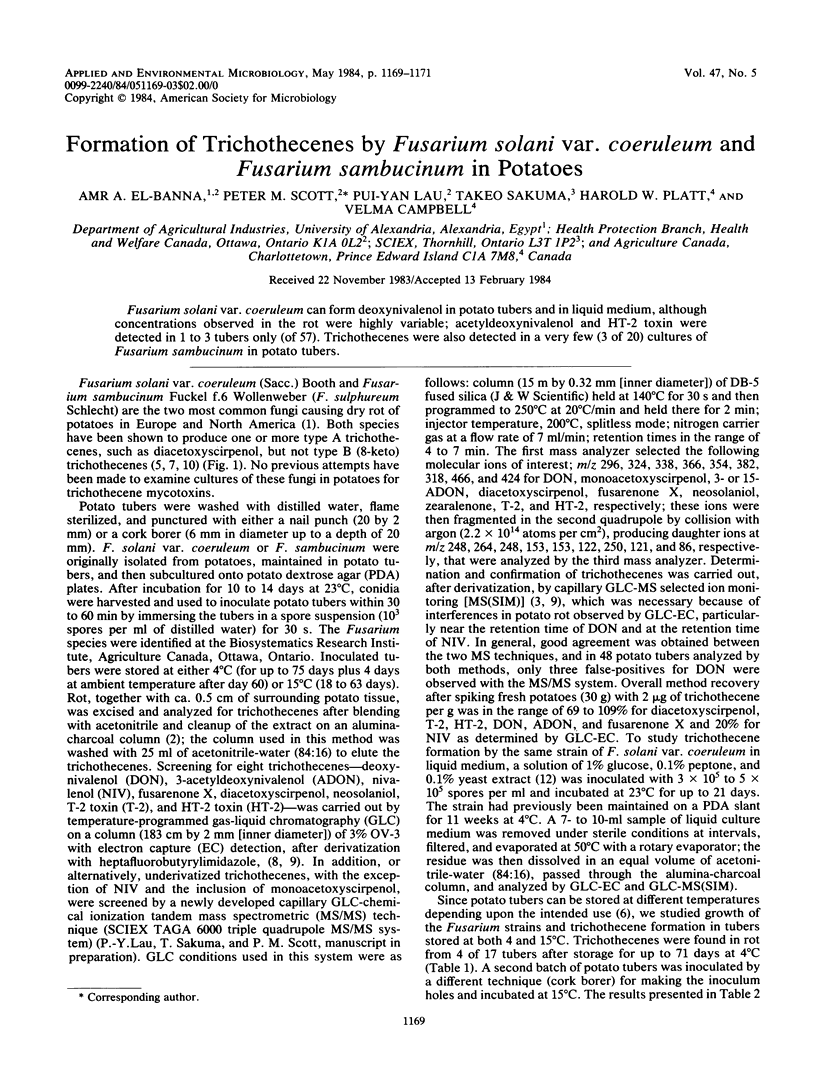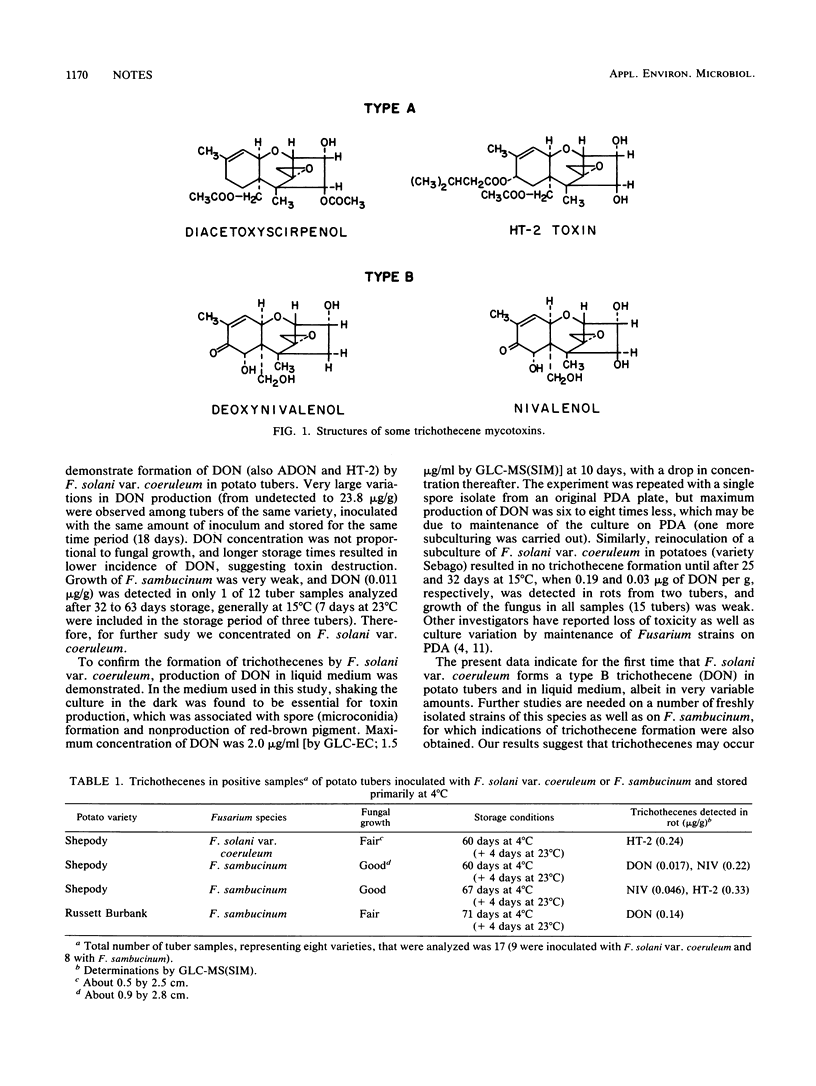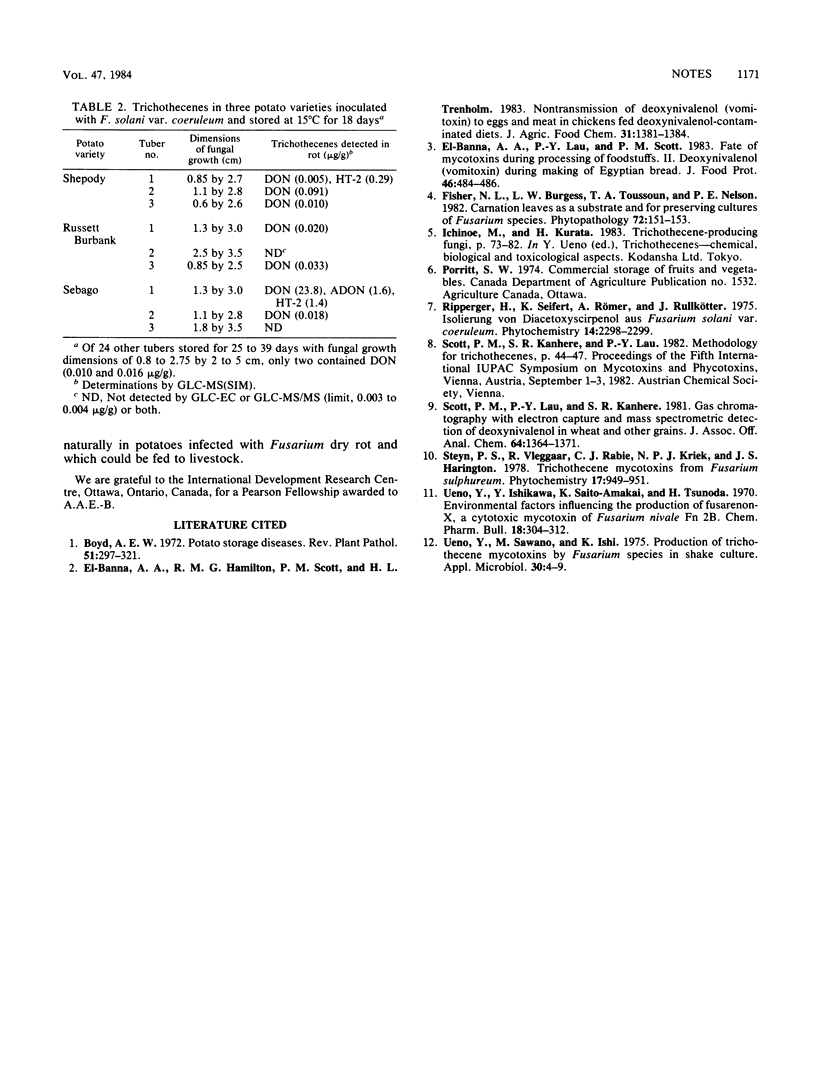Abstract
Fusarium solani var. coeruleum can form deoxynivalenol in potato tubers and in liquid medium, although concentrations observed in the rot were highly variable; acetyldeoxynivalenol and HT-2 toxin were detected in 1 to 3 tubers only (of 57). Trichothecenes were also detected in a very few (3 of 20) cultures of Fusarium sambucinum in potato tubers.
Full text
PDF


Selected References
These references are in PubMed. This may not be the complete list of references from this article.
- El-Banna A. A., Hamilton R. M., Scott P. M., Trenholm H. L. Nontransmission of deoxynivalenol (vomitoxin) to eggs and meat in chickens fed deoxynivalenol-contaminated diets. J Agric Food Chem. 1983 Nov-Dec;31(6):1381–1384. doi: 10.1021/jf00120a064. [DOI] [PubMed] [Google Scholar]
- Scott P. M., Lau P. Y., Kanhere S. R. Gas chromatography with electron capture and mass spectrometric detection of deoxynivalenol in wheat and other grains. J Assoc Off Anal Chem. 1981 Nov;64(6):1364–1371. [PubMed] [Google Scholar]
- Ueno Y., Ishikawa Y., Saito-Amakai K., Tsunoda H. Environmental factors influencing the production of fusarenon-X, a cytotoxic mycotoxin of Fusarium nivale Fn 2B. Chem Pharm Bull (Tokyo) 1970 Feb;18(2):304–312. doi: 10.1248/cpb.18.304. [DOI] [PubMed] [Google Scholar]
- Ueno Y., Sawano M., Ishii K. Production of trichothecene mycotoxins by Fusarium species in shake culture. Appl Microbiol. 1975 Jul;30(1):4–9. doi: 10.1128/am.30.1.4-9.1975. [DOI] [PMC free article] [PubMed] [Google Scholar]


